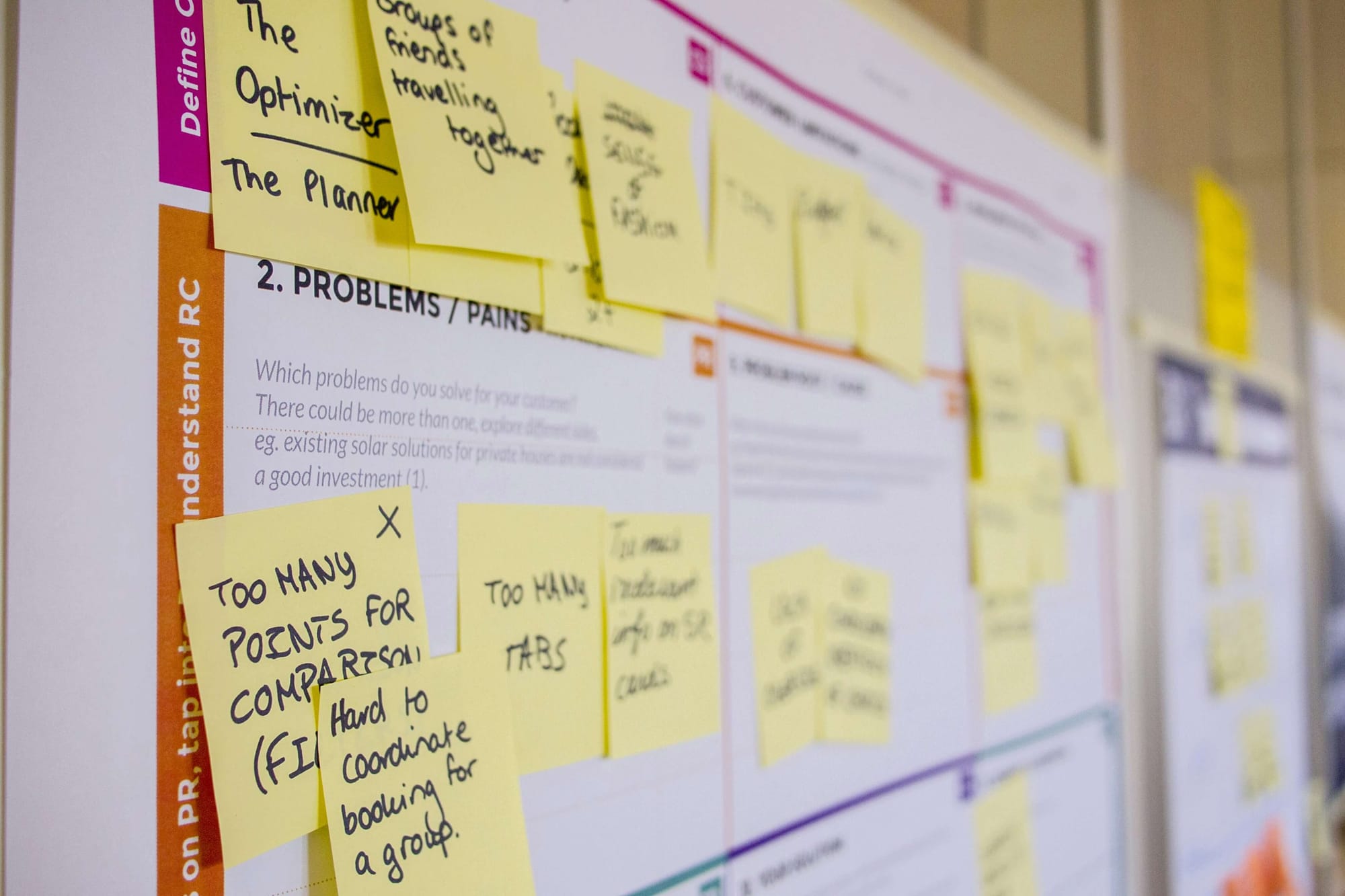Did you know that almost every modern business relies on Software-as-a-Service (SaaS) solutions today? The SaaS market is witnessing remarkable growth, valued at over $273 billion in 2023 and projected to reach more than $1.2 trillion by 2032. With 95% of organizations already using SaaS and an estimated 85% of all business applications expected to be SaaS-based by 2025, it’s clear that SaaS is no longer just a trend—it’s the backbone of digital business transformation.
As companies rapidly adopt SaaS platforms to streamline operations and scale efficiently, understanding how to measure success has become more important than ever. SaaS businesses thrive on recurring revenue, customer retention, and scalability—but without tracking the right metrics, even the most innovative companies can struggle to sustain growth. Metrics serve as the compass for SaaS success, helping businesses identify what’s working, what’s not, and where to optimize for profitability.
From measuring Monthly Recurring Revenue (MRR) to analyzing Customer Lifetime Value (CLV) and Churn Rate, these metrics provide crucial insights into both financial health and customer satisfaction. They empower leaders to make data-driven decisions, forecast future performance, and build stronger, customer-centric growth strategies. Simply put, knowing your SaaS metrics means knowing your business.
To make this process easier, Deskera ERP offers an all-in-one platform that helps you automate, track, and analyze essential SaaS metrics in real time. With powerful tools for financial management, billing, and analytics—along with AI-powered insights from Deskera’s virtual assistant, David—you can stay ahead of trends, identify opportunities for growth, and make smarter business decisions. Whether you’re managing subscriptions, forecasting revenue, or optimizing customer engagement, Deskera ERP provides the clarity and control every SaaS business needs to thrive.
What Are SaaS Metrics?
SaaS metrics are key performance indicators that measure how effectively a Software-as-a-Service (SaaS) business is performing. They provide a clear picture of a company’s financial health, customer retention, and overall growth trajectory. Since SaaS companies rely on recurring revenue models, these metrics serve as a real-time gauge of how well a business is attracting new users, retaining existing ones, and turning subscriptions into sustainable profitability.
At their core, SaaS metrics help businesses understand what drives success—from customer acquisition and engagement to long-term loyalty. By tracking these numbers, companies can identify patterns, predict churn, and evaluate the effectiveness of their marketing, sales, and product strategies. In short, good SaaS metrics not only highlight what’s working but also reveal areas that need improvement.
These metrics are not limited to software companies alone. Any business operating on a subscription-based or recurring revenue model can benefit from tracking SaaS metrics to optimize performance and ensure customer satisfaction. They offer a framework for making data-driven decisions that strengthen customer relationships, improve operational efficiency, and fuel sustainable growth.
In practice, SaaS metrics cover a range of categories—financial (like Monthly Recurring Revenue or Customer Lifetime Value), marketing and sales (like Customer Acquisition Cost), and customer success (like Churn Rate or Net Promoter Score). Together, they form the foundation for evaluating and enhancing every aspect of a SaaS business’s performance.
Importance of SaaS Metrics
Understanding the importance of SaaS metrics goes beyond tracking numbers—it’s about measuring what truly drives your business forward. In the fast-evolving SaaS landscape, these metrics help you stay competitive, identify growth opportunities, and build long-term customer relationships. They provide data-backed insights into every part of your business—from how efficiently you acquire customers to how effectively you retain them.
Below are the key reasons why SaaS metrics play a vital role in ensuring business success.
1. Measure Business Health and Performance
SaaS metrics act as a pulse check for your business. They help you assess how well your company is performing in terms of revenue, customer growth, and retention. Metrics like Monthly Recurring Revenue (MRR) and Annual Recurring Revenue (ARR) provide a predictable view of your financial stability, enabling better planning and resource allocation. Without these measurements, it’s nearly impossible to evaluate whether your business is moving in the right direction.
2. Improve Customer Retention and Reduce Churn
One of the greatest challenges for SaaS companies is retaining subscribers. Metrics such as Churn Rate, Customer Lifetime Value (CLV), and Net Revenue Retention (NRR) give you insight into customer behavior and satisfaction. By analyzing these figures, you can identify why users leave, implement proactive retention strategies, and strengthen long-term relationships that lead to consistent revenue streams.
3. Optimize Marketing and Sales Strategies
SaaS metrics help align marketing and sales efforts by offering clarity on customer acquisition and conversion efficiency. Metrics like Customer Acquisition Cost (CAC) and Conversion Rate show how effectively your company turns prospects into paying customers. This insight allows teams to fine-tune campaigns, manage budgets wisely, and prioritize channels that deliver the highest ROI.
4. Enable Data-Driven Decision-Making
Every strategic decision in a SaaS business should be backed by data, not intuition. Metrics help leaders identify what’s working, what’s not, and where improvements can be made. For example, tracking Activation Rate or Customer Engagement Scores can highlight bottlenecks in the user journey and guide product or onboarding improvements that enhance customer experience.
5. Support Long-Term Growth and Investor Confidence
For growing SaaS companies, metrics aren’t just internal tools—they’re critical for attracting investors and stakeholders. Financial indicators like MRR growth, gross margin, and churn trends reflect scalability and business potential. Transparent reporting of these numbers builds credibility, fosters investor confidence, and helps secure funding to scale operations further.
6. Align Teams Around Common Goals
SaaS metrics create a shared language across departments—from finance and sales to marketing and customer success. When everyone works with the same data, teams can collaborate more effectively toward unified objectives. This alignment ensures consistent progress tracking, improved accountability, and a collective focus on customer and revenue growth.
15 Most Important Metrics for SaaS Companies
Tracking the right SaaS metrics ensures that your business maintains sustainable growth, improves customer relationships, and drives profitability. These key performance indicators (KPIs) reveal how effectively your business acquires, retains, and monetizes customers.
Below are the 15 essential SaaS metrics every company should track—complete with ready-to-use formulas for accurate performance measurement.
1. Monthly Recurring Revenue (MRR)
MRR = Total Number of Paying Customers × Average Revenue Per Account (ARPA)
MRR measures predictable monthly revenue from active subscriptions. It provides a consistent view of financial performance and helps identify revenue growth trends. Tracking MRR enables SaaS leaders to forecast future income, manage cash flow, and assess the impact of new sales or customer churn. A steadily growing MRR indicates a healthy subscription base and strong business momentum.
2. Annual Recurring Revenue (ARR)
ARR = MRR × 12
ARR offers a long-term perspective on recurring revenue generated annually. It’s especially useful for planning and investor reporting, providing insights into revenue predictability. Monitoring ARR helps assess renewal performance, expansion opportunities, and the overall scalability of your SaaS model. A consistent rise in ARR reflects improved retention and stronger customer loyalty, which are key to sustainable growth.
3. Customer Acquisition Cost (CAC)
CAC = Total Sales and Marketing Expenses ÷ Number of New Customers Acquired
CAC indicates how much it costs to acquire a new paying customer. It’s essential for evaluating the efficiency of marketing and sales strategies. When compared with CLV, CAC helps determine profitability per customer. Reducing CAC through better lead targeting, automation, and optimized marketing funnels enhances cost efficiency while sustaining growth.
4. Customer Lifetime Value (CLV)
CLV = Average Revenue Per Account (ARPA) × Gross Margin × Average Customer Lifespan (in months or years)
CLV measures the total revenue a customer brings during their entire relationship with your company. It helps determine how much you can invest in acquiring and retaining customers. A high CLV relative to CAC means your business generates long-term profit from each customer. Focus on retention, upselling, and customer satisfaction to maximize CLV.
5. Churn Rate
Churn Rate = (Number of Customers Lost During Period ÷ Total Customers at Start of Period) × 100
Churn rate shows the percentage of customers who cancel their subscriptions in a given timeframe. It’s a crucial metric for assessing customer satisfaction and product-market fit. A high churn rate can quickly erode revenue growth. Reducing churn through proactive support, better onboarding, and consistent product updates ensures long-term profitability and loyalty.
6. Net Revenue Retention (NRR)
NRR = [(Starting MRR + Expansion MRR - Churned MRR - Downgrade MRR) ÷ Starting MRR] × 100
NRR measures how much recurring revenue is retained from existing customers, accounting for upgrades, downgrades, and churn. A value above 100% indicates revenue expansion even without new customer acquisition. NRR is vital for understanding customer loyalty, upsell effectiveness, and revenue resilience—key indicators of a mature and scalable SaaS business.
7. Gross Margin
Gross Margin = [(Total Revenue - Cost of Goods Sold) ÷ Total Revenue] × 100
Gross margin assesses how efficiently your business delivers its services relative to costs. It’s a direct indicator of profitability and scalability. SaaS companies typically aim for gross margins above 70%. Monitoring this metric helps identify unnecessary expenses and ensures healthy operational performance, allowing for reinvestment in growth and innovation.
8. Average Revenue Per User (ARPU)
ARPU = Total Monthly Recurring Revenue ÷ Total Number of Active Users
ARPU measures the average revenue generated per customer. It reflects pricing effectiveness and customer value. Increasing ARPU indicates that customers are adopting premium plans or add-ons. Businesses can boost ARPU through value-driven upselling, feature bundling, and targeted marketing strategies focused on higher-yield customer segments.
9. Customer Retention Rate
Customer Retention Rate = [(Customers at End of Period - New Customers Acquired) ÷ Customers at Start of Period] × 100
Customer retention rate shows how effectively your SaaS business keeps existing customers over time. High retention indicates satisfaction and product loyalty, leading to predictable revenue. Improving this metric involves offering great onboarding, regular engagement, and customer support that strengthens relationships and minimizes churn.
10. Conversion Rate
Conversion Rate = (Number of Conversions ÷ Total Number of Leads or Visitors) × 100
Conversion rate measures how effectively you turn leads into paying customers. It reflects the success of your sales funnel, messaging, and overall user experience. Enhancing conversion rates involves optimizing landing pages, improving CTAs, simplifying signup processes, and addressing buyer concerns to reduce drop-offs.
11. Customer Satisfaction Score (CSAT)
CSAT = (Sum of All Customer Satisfaction Ratings ÷ Number of Responses) × 100
CSAT evaluates customer happiness and overall satisfaction with your product or service. It’s typically measured via post-interaction surveys. High CSAT scores correlate with loyalty and retention. Regularly collecting feedback and acting on it can increase satisfaction, reduce churn, and improve your brand’s reputation in a competitive SaaS market.
12. Net Promoter Score (NPS)
NPS = % Promoters - % Detractors
NPS measures how likely customers are to recommend your SaaS product to others. Scores range from -100 to +100, with higher numbers indicating stronger loyalty. Tracking NPS helps identify promoters (happy users) and detractors (unhappy users) to refine customer experience strategies. A rising NPS means your brand is earning trust and fostering organic growth through referrals.
13. Activation Rate
Activation Rate = (Number of Users Who Reached Activation Milestone ÷ Total Sign-Ups) × 100
Activation rate measures how many users experience the core value of your product shortly after signing up. It’s crucial for understanding onboarding success and user adoption. Improving activation involves simplifying the setup process, offering guided tours, and ensuring users achieve quick wins that encourage continued engagement and retention.
14. Customer Engagement Score
Engagement Score = Weighted Sum of User Activities (e.g., logins, feature use, time spent)
This score quantifies how actively users interact with your SaaS product. High engagement correlates with lower churn and higher upsell potential. Tracking engagement helps you identify power users, detect at-risk accounts, and tailor customer success efforts. Enhancing engagement through education, gamification, and personalized communication drives long-term loyalty.
15. Lead Velocity Rate (LVR)
LVR = [(Number of Qualified Leads This Month - Qualified Leads Last Month) ÷ Qualified Leads Last Month] × 100
LVR tracks the growth rate of qualified leads in your sales pipeline month-over-month. It’s a forward-looking metric that predicts future revenue potential. A positive LVR signals healthy marketing performance and consistent demand. Maintaining a steady or increasing LVR ensures predictable sales growth and business stability over time.
Tips for Improving SaaS Metrics
Every SaaS metric you track can become a lever for growth. Monitoring key performance indicators (KPIs) helps identify weaknesses, test new strategies, and refine operations over time. Whether you’re preparing for funding or scaling, optimizing these metrics can significantly strengthen your business foundation.
Here are effective ways to improve your core SaaS metrics.
1. Boost Monthly and Annual Recurring Revenue (MRR & ARR)
- Conduct regular pricing reviews and customer surveys to ensure your pricing matches perceived value.
- Introduce upsells, add-ons, or feature-based premium tiers to increase recurring revenue.
- Offer discounted annual subscriptions to encourage longer commitments, improving ARR predictability.
- Focus on acquiring customers with higher lifetime potential rather than just volume growth.
2. Increase Average Revenue Per Account (ARPA)
- If ARPA is decreasing, analyze which customer segments bring less value and refine your targeting.
- Introduce tiered pricing models or bundle valuable features into higher plans.
- Use account expansion strategies such as cross-selling or usage-based pricing to increase customer spend.
- Continuously evaluate customer feedback to align pricing with delivered value.
3. Enhance Customer Lifetime Value (CLV)
- Offer loyalty programs, referral bonuses, or long-term discounts to encourage renewals.
- Strengthen customer engagement through regular communication, webinars, and product updates.
- Provide dedicated account management for high-value clients to boost retention.
- Keep evolving your product’s core value proposition to ensure customers stay for the long haul.
4. Control Customer Acquisition Cost (CAC)
- Track your marketing channel ROI and prioritize those with the highest conversion efficiency.
- Adopt a product-led growth (PLG) model—allow the product to drive organic sign-ups and referrals.
- Automate parts of your marketing funnel to reduce manual overhead.
- Ensure your CAC recovery happens within the first year of customer acquisition.
5. Minimize Churn Rate
- Analyze churn reasons through exit surveys or feedback forms.
- Create a strong onboarding experience to help customers reach value faster.
- Offer flexible subscription options or pause plans instead of immediate cancellations.
- Implement proactive customer success teams to identify at-risk users before they leave.
6. Improve Net Revenue Retention (NRR)
- Focus on expansion revenue by upselling or cross-selling to existing users.
- Keep track of account downgrades and address underlying product satisfaction issues.
- Regularly communicate product enhancements that drive greater usage and perceived value.
- Reward long-term users with loyalty benefits or exclusive features.
7. Strengthen Gross Margin
- Automate manual workflows to reduce service delivery costs.
- Use cloud optimization tools to manage hosting and infrastructure expenses efficiently.
- Streamline customer support through AI-driven chatbots and knowledge bases.
- Continuously review vendor and third-party software costs to ensure profitability.
8. Increase Customer Retention Rate
- Use engagement analytics to identify behavior patterns of loyal customers.
- Personalize communication with tailored recommendations and updates.
- Offer regular check-ins or “health reports” for enterprise customers.
- Use Net Promoter Score (NPS) data to pinpoint and address customer pain points.
9. Improve Activation Rate
- Optimize the onboarding process by reducing the number of steps to “first success.”
- Conduct user experience (UX) testing to identify friction points.
- Use in-app guides, tooltips, and walkthroughs to drive quicker adoption.
- Gather customer feedback during early interactions to refine activation milestones.
10. Elevate Net Promoter Score (NPS)
- Follow up with detractors to understand dissatisfaction and resolve issues quickly.
- Encourage promoters to share testimonials or participate in referral programs.
- Keep improving based on feedback—customers value when their suggestions are implemented.
- Maintain strong customer communication to reinforce trust and transparency.
11. Increase Customer Satisfaction (CSAT)
- Provide fast, responsive support through live chat, help centers, and knowledge bases.
- Track and analyze survey data to identify recurring problems.
- Reward customer feedback that contributes to meaningful product improvement.
- Train your customer service team to deliver consistent, empathetic, and proactive support.
12. Improve Conversion Rate
- Simplify your sign-up flow and reduce friction in the checkout process.
- Use A/B testing to refine landing pages and messaging.
- Leverage free trials or freemium models to encourage conversions.
- Create social proof with reviews, testimonials, and case studies that build trust.
13. Enhance Lead Velocity Rate (LVR)
- Continuously refine your lead qualification process to improve quality.
- Invest in SEO, content marketing, and lead nurturing campaigns.
- Sync marketing and sales teams to align messaging and goals.
- Analyze lead sources monthly to maintain healthy pipeline growth.
14. Increase Customer Engagement Score
- Introduce gamified experiences or achievement badges for active users.
- Send personalized usage insights to help customers see value.
- Offer product education through tutorials, blogs, and webinars.
- Set up alerts for disengaged users and re-engage them through targeted outreach.
15. Adopt Data-Driven Decision Making
- Use analytics dashboards to monitor trends in real time.
- Regularly review KPIs and make iterative adjustments.
- Use cohort analysis to understand user behavior and lifecycle patterns.
- Encourage a culture of experimentation—test new ideas, measure, and iterate quickly.
How to Use SaaS Metrics Effectively
Tracking SaaS metrics is only valuable when you know how to interpret and act on them. Data-driven insights empower SaaS companies to identify growth opportunities, optimize operations, and make informed strategic decisions. However, with countless KPIs available, the real challenge lies in using them effectively to align with business goals and customer expectations.
Below are practical ways to make SaaS metrics work for your organization:
1. Align Metrics with Business Goals
Before diving into tracking every possible KPI, define what success looks like for your SaaS business. Are you focused on scaling customer acquisition, improving retention, or optimizing profitability? Aligning metrics with specific objectives ensures that your efforts are targeted and meaningful. For instance, a startup in its early stages may prioritize MRR, CAC, and activation rates, while a mature SaaS firm might focus more on LTV, NRR, and churn reduction.
2. Focus on Actionable Metrics
Not all metrics offer equal value. Avoid “vanity metrics” like total sign-ups or app downloads that don’t correlate directly with growth or retention. Instead, focus on actionable metrics — those that drive real decisions, such as customer retention rate, ARPU, or customer engagement. Each metric should answer a question like, “What action can we take to improve this number?”
3. Monitor Trends, Not Just Numbers
SaaS success is built on consistency over time, not one-time wins. Look for trends in your metrics rather than isolated data points. For example, a small dip in MRR for one month may not be alarming, but a three-month downward trend could indicate deeper issues. Use visualization dashboards to track performance patterns and set up automated alerts for early detection of anomalies.
4. Segment Your Data for Deeper Insights
Segmenting your metrics provides clarity on where growth and challenges are coming from. Break down data by customer type, region, pricing tier, or acquisition channel to understand performance variations. For instance, if churn is high among small businesses but low among enterprise clients, your product or pricing strategy may need adjustment for that specific segment.
5. Combine Metrics for a Holistic View
No single SaaS metric can tell the whole story. To gain a complete understanding, use multiple metrics together. For example, combining CAC and LTV helps evaluate profitability, while MRR growth rate and churn rate together reveal net revenue retention. By analyzing these interrelated data points, you get a 360° view of your company’s financial and operational health.
6. Benchmark Against Industry Standards
Comparing your metrics to industry averages or competitors can provide perspective on where you stand. Benchmarking helps identify whether your churn rate, CAC, or ARPU is within a healthy range. It also highlights potential improvement areas and sets realistic targets for your growth stage and market size.
7. Use Metrics to Drive Continuous Improvement
SaaS metrics should not just be reviewed at quarter-end; they should fuel ongoing optimization. Create a feedback loop where insights lead to testing, and results feed back into strategy. For example, if your NPS score drops, test changes to customer support or feature sets and measure the impact over time. Continuous iteration based on metrics ensures sustainable performance improvements.
8. Integrate Metrics into Decision-Making Tools
Use ERP or business analytics platforms to automate metric tracking and reporting. Tools like Deskera ERP simplify this by consolidating financial, customer, and operational data into unified dashboards. With AI-driven insights and real-time alerts, Deskera helps SaaS businesses make quick, evidence-based decisions, ensuring that every move aligns with measurable outcomes.
9. Communicate Metrics Across Teams
Metrics are most effective when everyone in your organization understands them. Share key metrics across sales, marketing, customer success, and product teams to align goals. For instance, when marketing understands churn trends or CAC recovery time, they can refine their strategies to attract higher-value customers. Cross-department visibility fosters collaboration and accountability.
10. Revisit and Refine Regularly
SaaS markets evolve quickly, and so should your metrics strategy. Periodically review your KPIs to ensure they still align with your current business stage and objectives. Retire outdated metrics and introduce new ones that better reflect your growth priorities, such as usage-based pricing impact or feature adoption rate.
Common Mistakes Companies Make When Tracking SaaS Metrics
While tracking SaaS metrics is essential for growth and sustainability, many companies fall into the trap of misinterpreting or misusing their data. These mistakes can lead to poor decision-making, wasted resources, and inaccurate assessments of business health. Understanding these common pitfalls helps ensure that your metrics drive meaningful action rather than confusion.
1. Focusing on Vanity Metrics
One of the biggest mistakes SaaS companies make is tracking metrics that look good on paper but offer little strategic value. Numbers like total sign-ups, website visits, or social followers might appear impressive, but they don’t necessarily indicate business growth or profitability. Instead, focus on metrics that reflect genuine performance—such as Customer Lifetime Value (CLV), Net Revenue Retention (NRR), or Churn Rate—to make data-driven decisions that impact long-term success.
2. Tracking Too Many Metrics at Once
SaaS companies often try to measure everything, leading to “data overload.” When too many KPIs are tracked simultaneously, teams lose focus on what truly matters. It’s better to prioritize a small set of core metrics aligned with your business goals and growth stage. For example, early-stage startups should focus on MRR, CAC, and activation rate, while established SaaS firms should emphasize NRR, LTV, and profitability.
3. Ignoring Data Accuracy and Quality
Inaccurate or incomplete data can render even the most sophisticated metrics useless. Errors in data collection, outdated records, or inconsistent reporting can distort insights. To avoid this, implement automated tracking systems and data validation processes. Regular audits of CRM and analytics tools ensure your SaaS metrics are based on reliable, real-time data.
4. Failing to Segment Data
Averages can be misleading. Many companies track overall churn, revenue, or engagement without segmenting by customer type, pricing plan, or geography. This lack of segmentation masks key insights. For instance, your churn rate might appear stable overall but could be spiking among small-business customers. Breaking data into meaningful segments reveals the true performance drivers and helps tailor strategies for each customer group.
5. Not Connecting Metrics Across Departments
Metrics often live in silos—marketing tracks CAC, sales monitors conversion rates, and customer success manages churn. When teams don’t share data, they miss the bigger picture. True insight comes from connecting these metrics to understand how each function affects another. For example, a high CAC might be acceptable if LTV is proportionally higher. Integrated tracking through tools like Deskera ERP ensures all departments work toward shared KPIs and unified growth goals.
6. Ignoring the Story Behind the Numbers
Metrics provide context, not conclusions. Many companies focus solely on numerical outcomes without analyzing the reasons behind changes. A drop in MRR or increase in churn is just a symptom—understanding why it’s happening is key. Combine quantitative data with qualitative insights, such as customer feedback and usage behavior, to identify root causes and craft effective solutions.
7. Not Revisiting Metrics as the Business Evolves
As your SaaS business grows, your priorities and success indicators should evolve too. Sticking to outdated KPIs can lead to misaligned strategies. For example, early-stage metrics like user acquisition become less relevant as you mature and focus on customer retention or profitability. Review your SaaS metrics quarterly to ensure they match your company’s current stage, goals, and market realities.
8. Measuring Outputs Instead of Outcomes
Tracking outputs—like the number of leads generated or emails sent—without considering outcomes—such as conversion rate or customer satisfaction—limits your visibility into actual performance. The best SaaS metrics measure impact, not just activity. Shifting from output-based to outcome-based measurement ensures your efforts directly contribute to growth and customer value.
9. Overlooking Leading Indicators
Companies often focus too heavily on lagging indicators like revenue or churn, which only show what has already happened. Leading indicators, such as activation rate, feature adoption, or user engagement, predict future performance and give teams time to act before problems escalate. Balancing both ensures a proactive approach to growth and retention.
10. Not Acting on Insights
Perhaps the most common mistake is tracking metrics without taking meaningful action. Collecting data without implementing improvements wastes time and potential. Each metric should trigger a response—whether it’s refining pricing, improving onboarding, or adjusting marketing strategies. Effective SaaS leaders treat metrics as decision-making tools, not just reports.
11. Lack of Contextual Benchmarking
Without comparing your metrics to industry standards or historical data, it’s difficult to know what “good” performance looks like. Many companies operate in isolation, missing opportunities to identify strengths or gaps. Benchmarking helps assess competitiveness and set realistic performance targets based on SaaS industry norms.
12. Failing to Communicate Insights Company-Wide
SaaS metrics lose impact when confined to leadership reports. Every team—from product to marketing—should understand how their actions affect company-wide KPIs. Regularly sharing metric dashboards fosters transparency, alignment, and collective accountability. Using ERP systems like Deskera, you can centralize reporting so all stakeholders access real-time insights that guide decision-making.
How Deskera ERP Can Help You

Tracking and improving SaaS metrics can be complex without the right tools. Deskera ERP simplifies this process by bringing all your key business data—financial, operational, and customer—into one unified platform. It provides end-to-end visibility and real-time insights that help SaaS companies measure performance accurately and make smarter, data-backed decisions.
1. Centralized Dashboard for Real-Time SaaS Metrics
Deskera ERP offers intuitive dashboards that consolidate your most important KPIs—like MRR, churn rate, CAC, LTV, and ARPU—in one place. This helps you visualize your company’s performance at a glance without switching between multiple tools. You can monitor real-time changes and identify trends early, enabling proactive business management rather than reactive decision-making.
2. Automated Financial Tracking and Reporting
Manual data entry and spreadsheet tracking can lead to errors that distort financial metrics. Deskera ERP automates financial reporting, giving you precise insights into revenue, expenses, and cash flow. This ensures your gross margins, recurring revenue, and profitability ratios are always accurate. Customizable reports make it easy to analyze performance over time or present data to investors with confidence.
3. Advanced Analytics and AI-Driven Insights
Deskera ERP’s AI-powered analytics help translate raw data into actionable insights. Its intelligent assistant, David, analyzes patterns and provides recommendations to optimize your business strategy—whether it’s reducing churn, improving pricing, or forecasting future revenue. With predictive analytics, you can identify potential risks and opportunities before they impact your bottom line.
4. Seamless Integration Across Departments
SaaS companies often face data silos between finance, sales, and customer success teams. Deskera ERP eliminates this challenge by integrating all business functions under one system. This ensures consistent data flow—so your marketing team sees the same metrics as finance or operations, promoting cross-functional alignment and collaboration.
5. Enhanced Forecasting and Scenario Planning
Accurate forecasting is critical for SaaS growth. Deskera ERP’s forecasting tools let you simulate different business scenarios—such as pricing adjustments or customer churn impact—to see how they affect your future revenue and profit margins. This helps leadership teams plan strategically and allocate resources more effectively.
6. Simplified Data Visualization and Reporting for Investors
When presenting performance metrics to stakeholders or investors, clarity matters. Deskera ERP enables you to generate dynamic, visual reports that clearly communicate your company’s growth trajectory. You can highlight key SaaS KPIs, trends, and projections—all updated in real time—making performance reporting seamless and transparent.
7. Scalable Solution for Growing SaaS Businesses
As your SaaS business expands, your metric-tracking needs become more complex. Deskera ERP scales with your company, adapting to new metrics, data sources, and operational processes. Whether you’re managing hundreds or thousands of customers, it ensures data consistency and operational efficiency without requiring complex technical setup.
Deskera ERP empowers SaaS companies to move beyond basic tracking and embrace data-driven performance management. By automating metric collection, offering real-time dashboards, and providing AI-led insights, it helps you focus on what truly matters—driving growth, improving retention, and achieving sustainable profitability.
Key Takeaways
- Tracking SaaS metrics such as MRR, LTV, CAC, and churn rate is vital for evaluating business performance and ensuring long-term profitability.
- Key metrics like Monthly Recurring Revenue (MRR), Customer Acquisition Cost (CAC), Lifetime Value (LTV), and Churn Rate provide a clear picture of revenue stability, customer retention, and operational efficiency.
- Regularly evaluate and optimize key performance indicators by enhancing customer retention, refining pricing models, and balancing acquisition costs to sustain growth and profitability.
- Metrics are most effective when used to guide decisions—set benchmarks, align teams with goals, and create data-driven strategies that enhance customer experience and revenue growth.
- Avoid tracking vanity metrics or analyzing data in isolation. Misinterpreting or inconsistently measuring KPIs can lead to poor business decisions and missed opportunities.
- Deskera ERP centralizes your SaaS metrics, automates data tracking, and delivers AI-driven insights, enabling your business to make informed decisions, optimize performance, and scale efficiently.
Related Articles

















